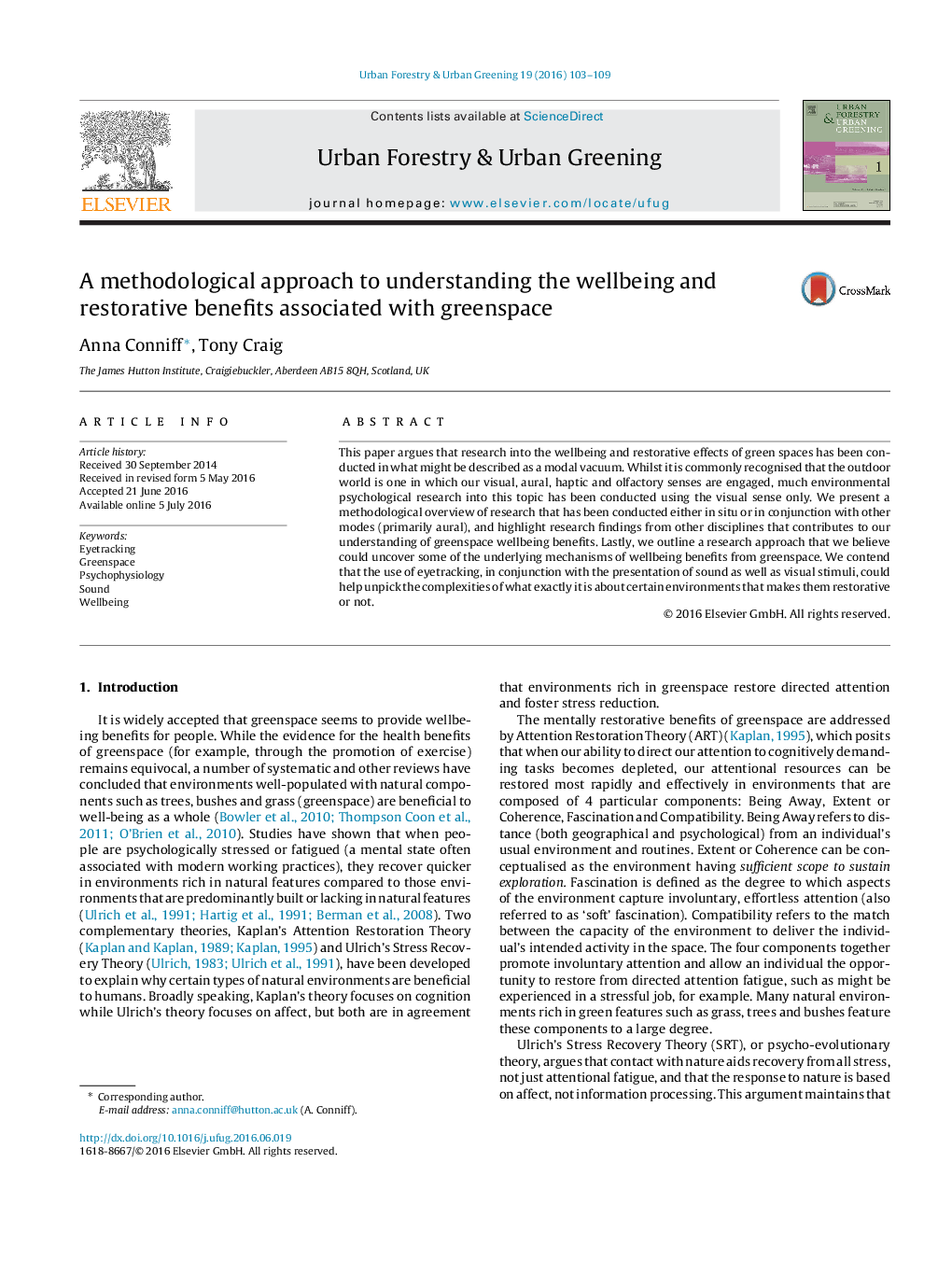| Article ID | Journal | Published Year | Pages | File Type |
|---|---|---|---|---|
| 93920 | Urban Forestry & Urban Greening | 2016 | 7 Pages |
•Psychological research on benefits of greenspace has mainly focused on visual mode.•Evidence that other modalities such as sound are important is discussed.•Psychophysiological findings and advantages of eye tracking are described.•A theoretical research approach involving both vision and sound is outlined.
This paper argues that research into the wellbeing and restorative effects of green spaces has been conducted in what might be described as a modal vacuum. Whilst it is commonly recognised that the outdoor world is one in which our visual, aural, haptic and olfactory senses are engaged, much environmental psychological research into this topic has been conducted using the visual sense only. We present a methodological overview of research that has been conducted either in situ or in conjunction with other modes (primarily aural), and highlight research findings from other disciplines that contributes to our understanding of greenspace wellbeing benefits. Lastly, we outline a research approach that we believe could uncover some of the underlying mechanisms of wellbeing benefits from greenspace. We contend that the use of eyetracking, in conjunction with the presentation of sound as well as visual stimuli, could help unpick the complexities of what exactly it is about certain environments that makes them restorative or not.
